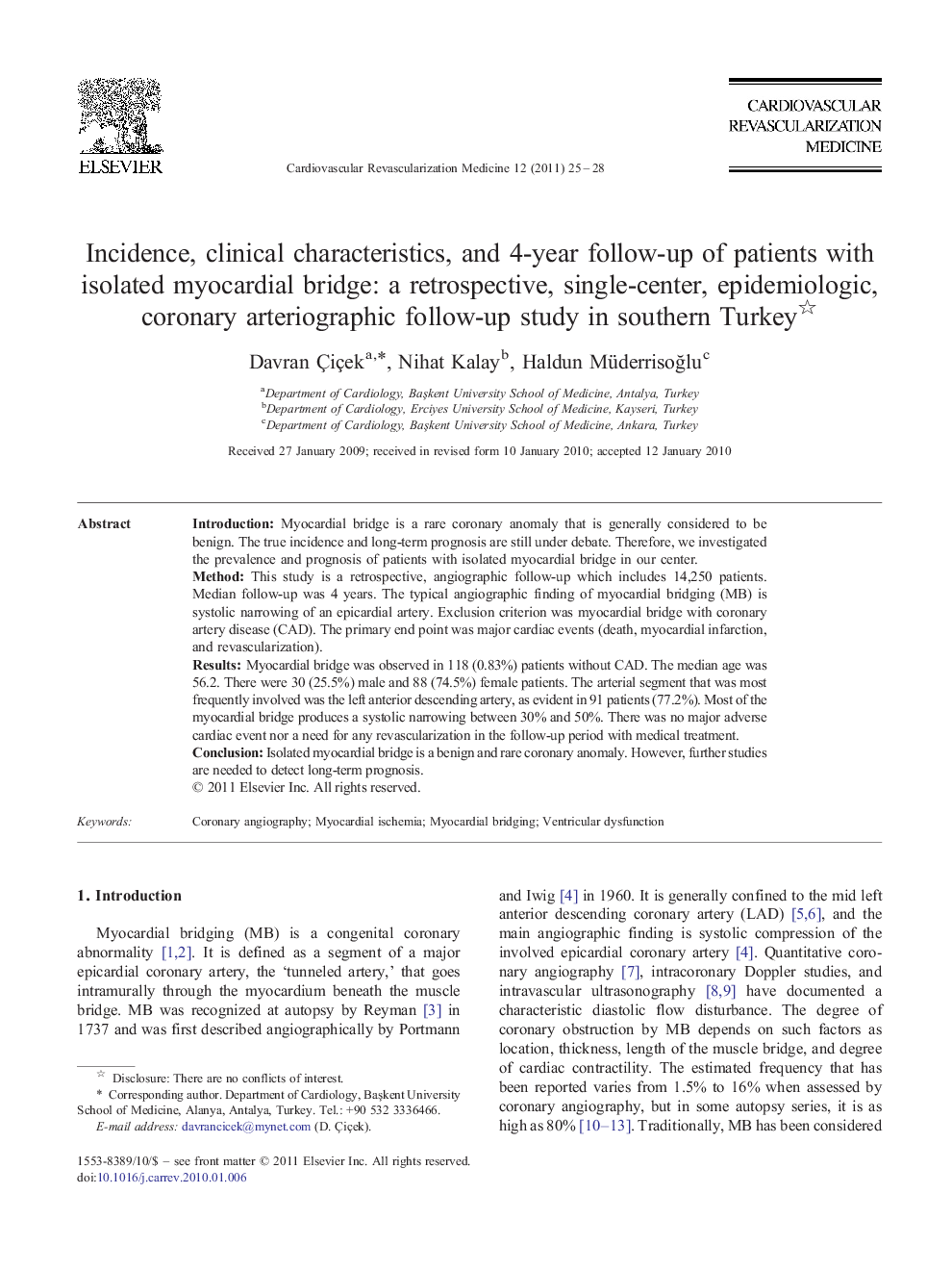| Article ID | Journal | Published Year | Pages | File Type |
|---|---|---|---|---|
| 2837110 | Cardiovascular Revascularization Medicine | 2011 | 4 Pages |
IntroductionMyocardial bridge is a rare coronary anomaly that is generally considered to be benign. The true incidence and long-term prognosis are still under debate. Therefore, we investigated the prevalence and prognosis of patients with isolated myocardial bridge in our center.MethodThis study is a retrospective, angiographic follow-up which includes 14,250 patients. Median follow-up was 4 years. The typical angiographic finding of myocardial bridging (MB) is systolic narrowing of an epicardial artery. Exclusion criterion was myocardial bridge with coronary artery disease (CAD). The primary end point was major cardiac events (death, myocardial infarction, and revascularization).ResultsMyocardial bridge was observed in 118 (0.83%) patients without CAD. The median age was 56.2. There were 30 (25.5%) male and 88 (74.5%) female patients. The arterial segment that was most frequently involved was the left anterior descending artery, as evident in 91 patients (77.2%). Most of the myocardial bridge produces a systolic narrowing between 30% and 50%. There was no major adverse cardiac event nor a need for any revascularization in the follow-up period with medical treatment.ConclusionIsolated myocardial bridge is a benign and rare coronary anomaly. However, further studies are needed to detect long-term prognosis.
